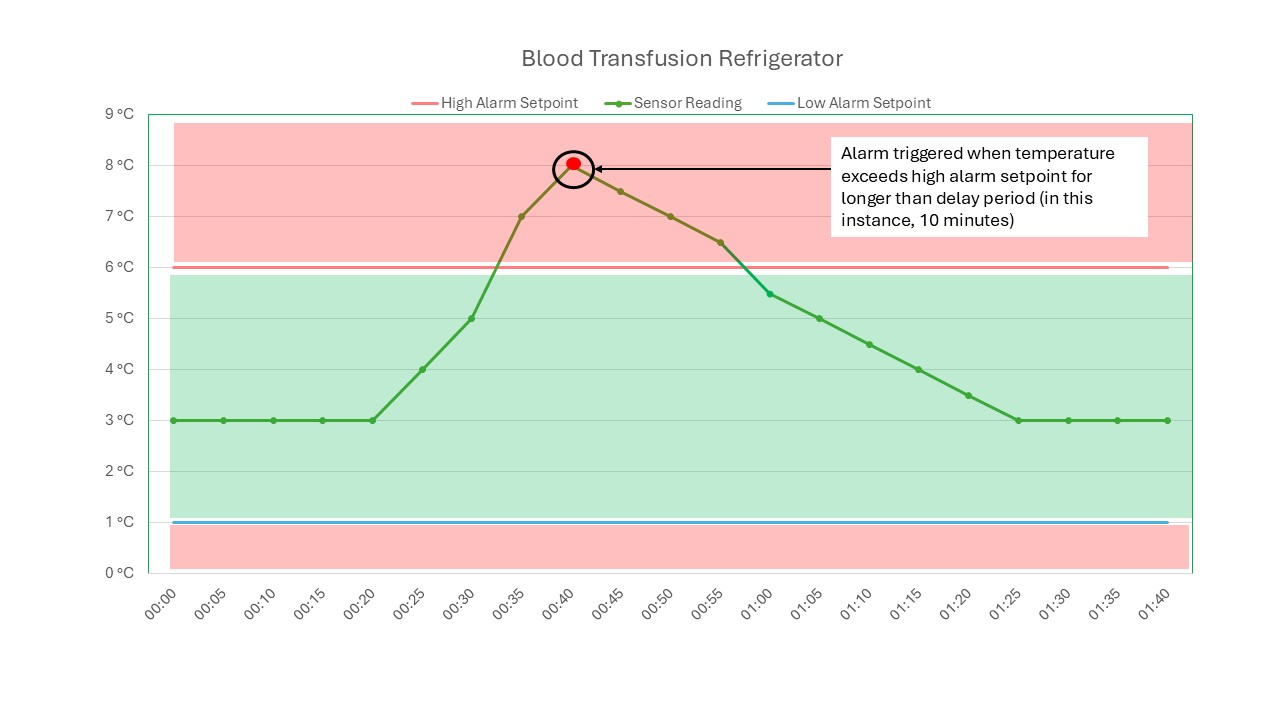Setpoints
A setpoint is the acceptable range (for example, temperature range, humidity range, etc.) and alarm delay period of a sensor.
There are two types:
Alarm Setpoints
See Modify an Alarm Setpoint for instructions on how to modify the high/low threshold and alarm delay period of a sensor.
Alert Setpoints (Optional Feature)
Alerts are an optional feature. Please contact us to enable them.
See Modify an Alert Setpoint for instructions on how to modify the high/low threshold and alert delay period of a sensor.
We do not call contacts in the event of an alert; instead, we notify them via SMS and email.


